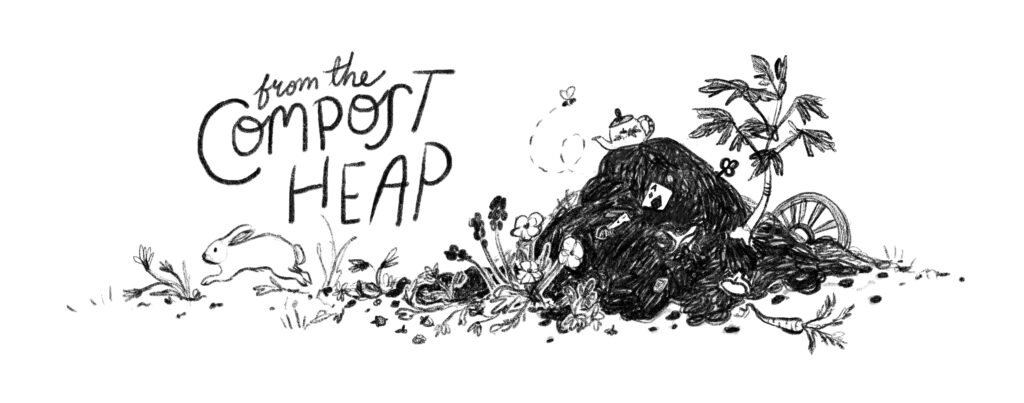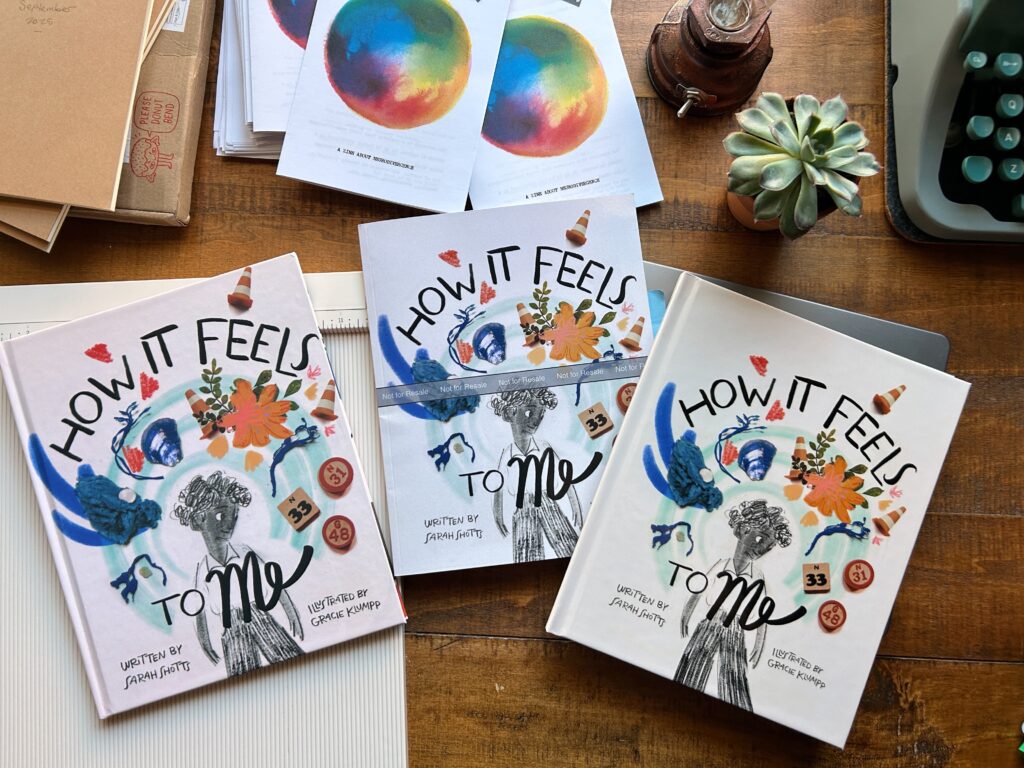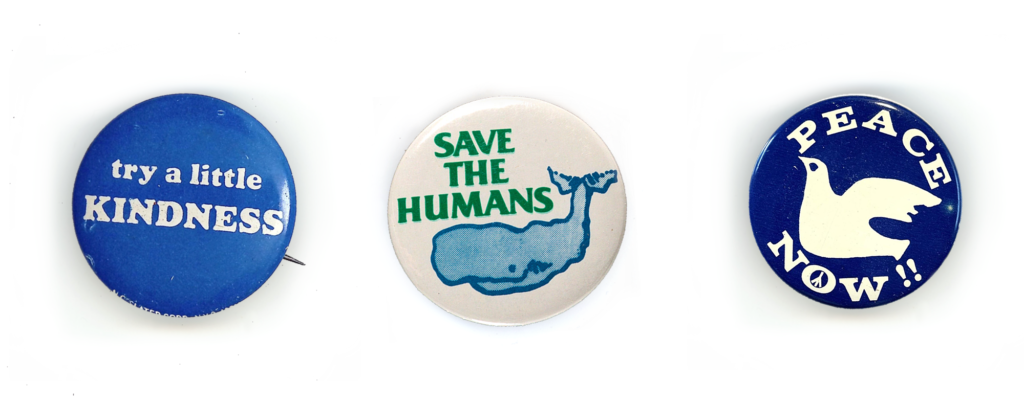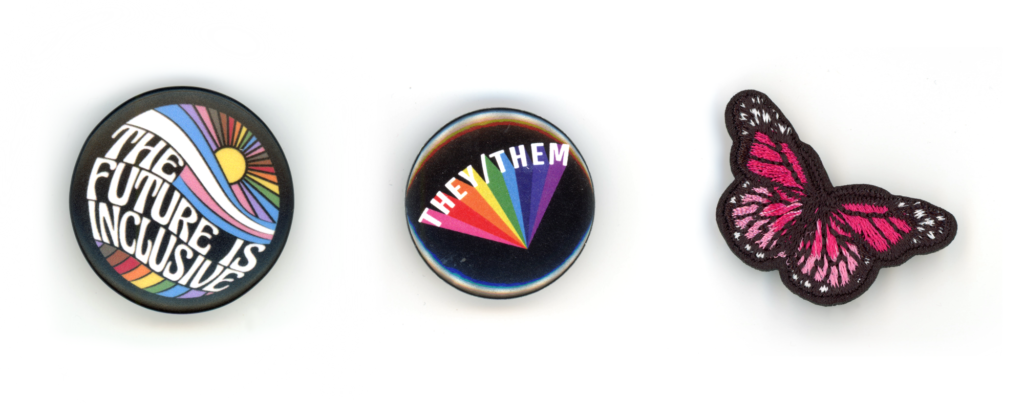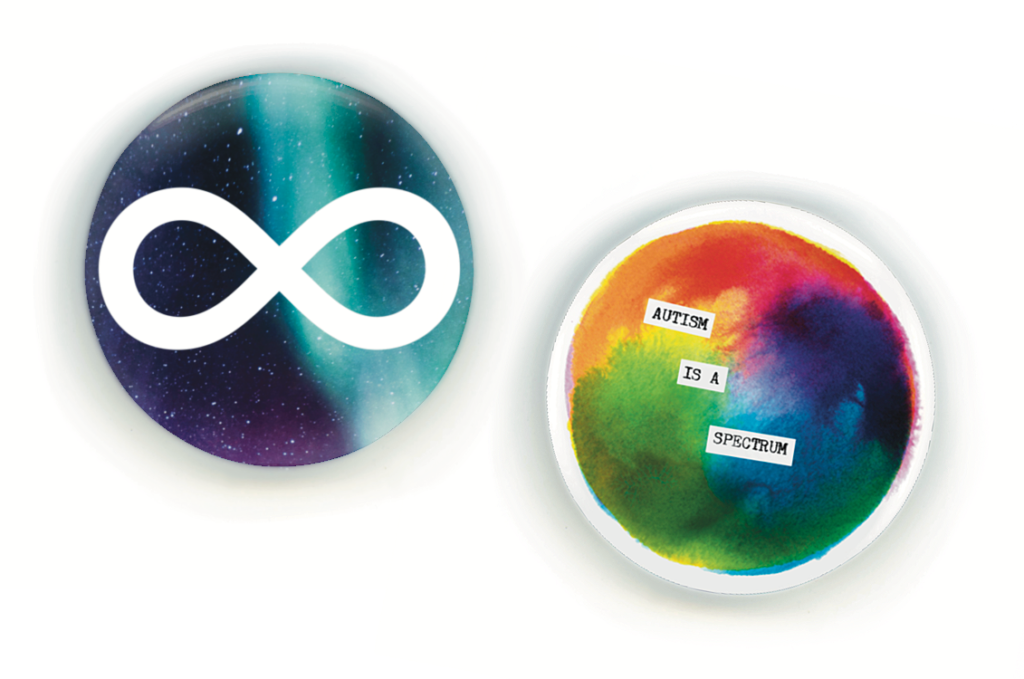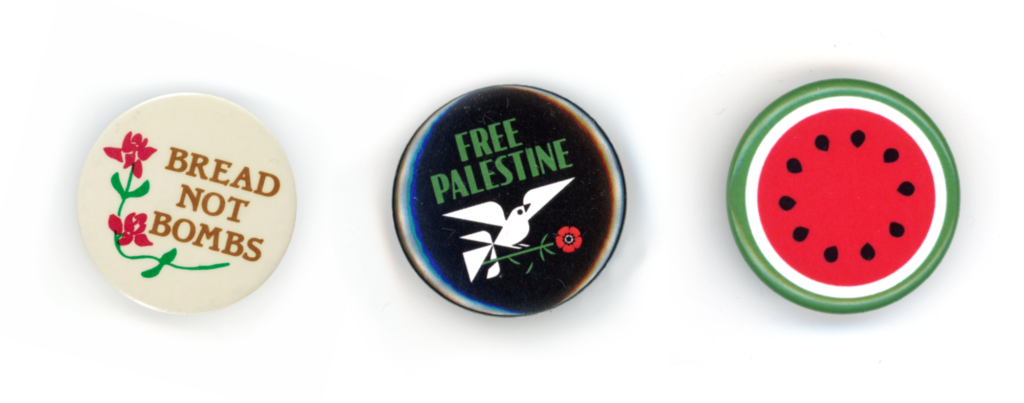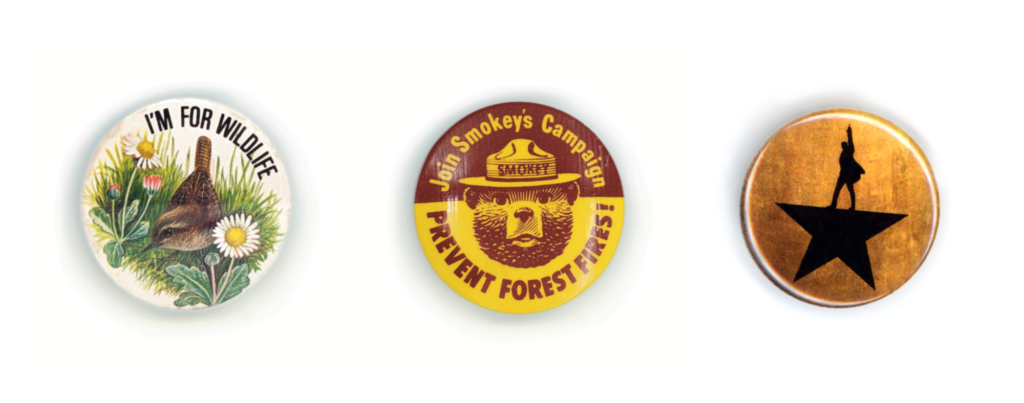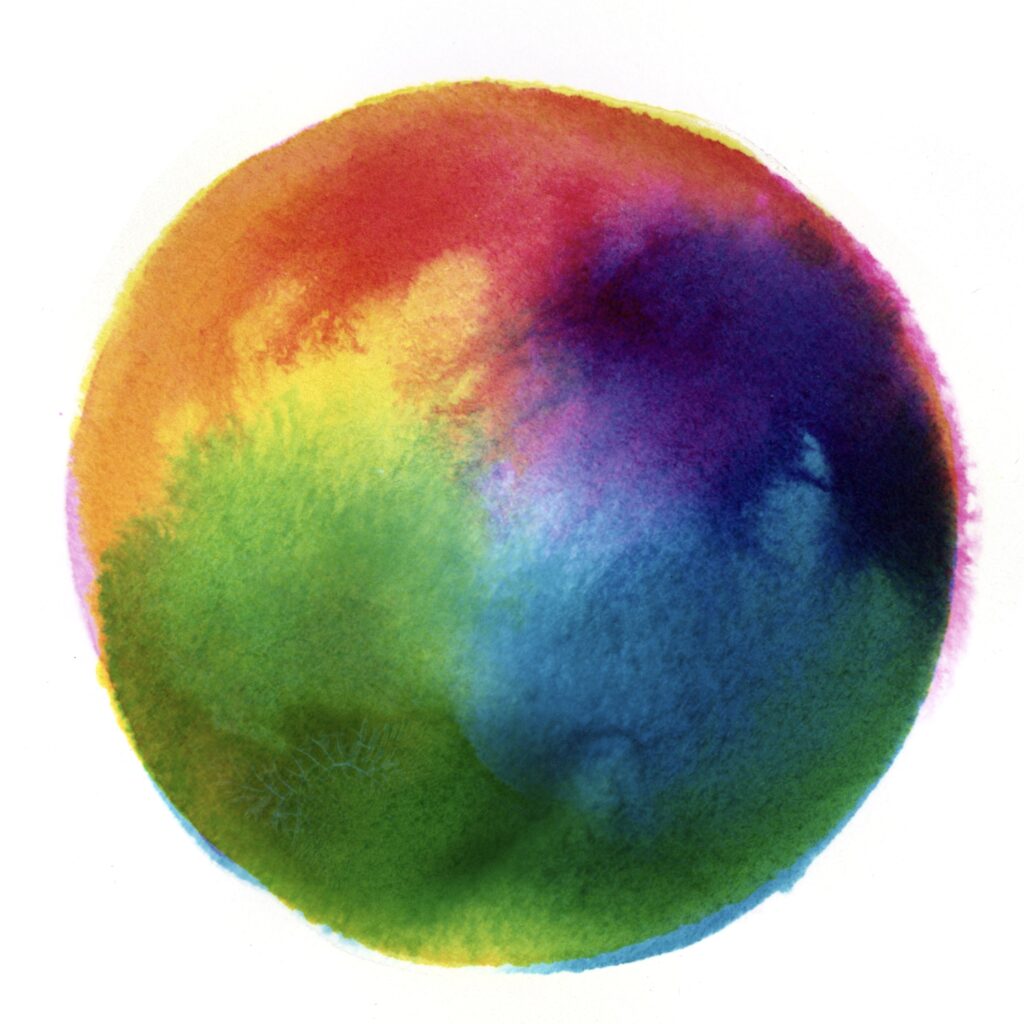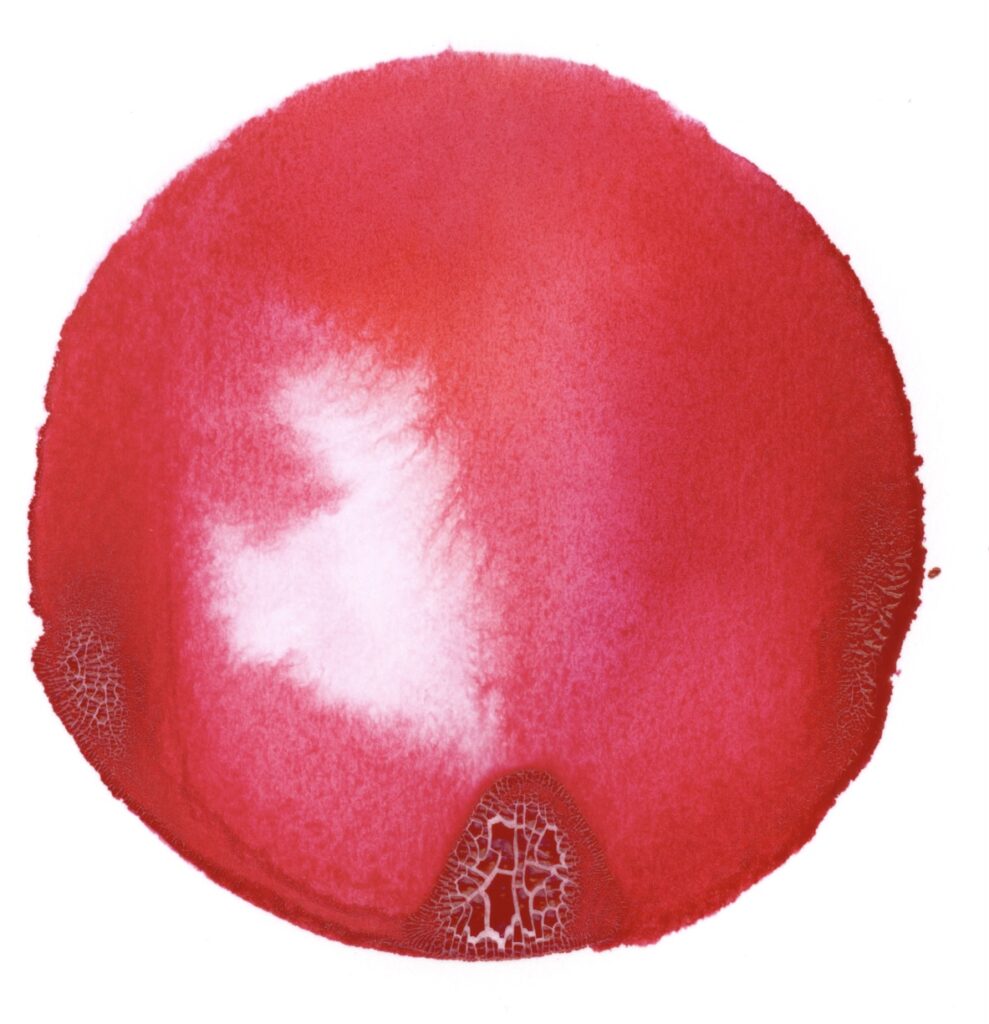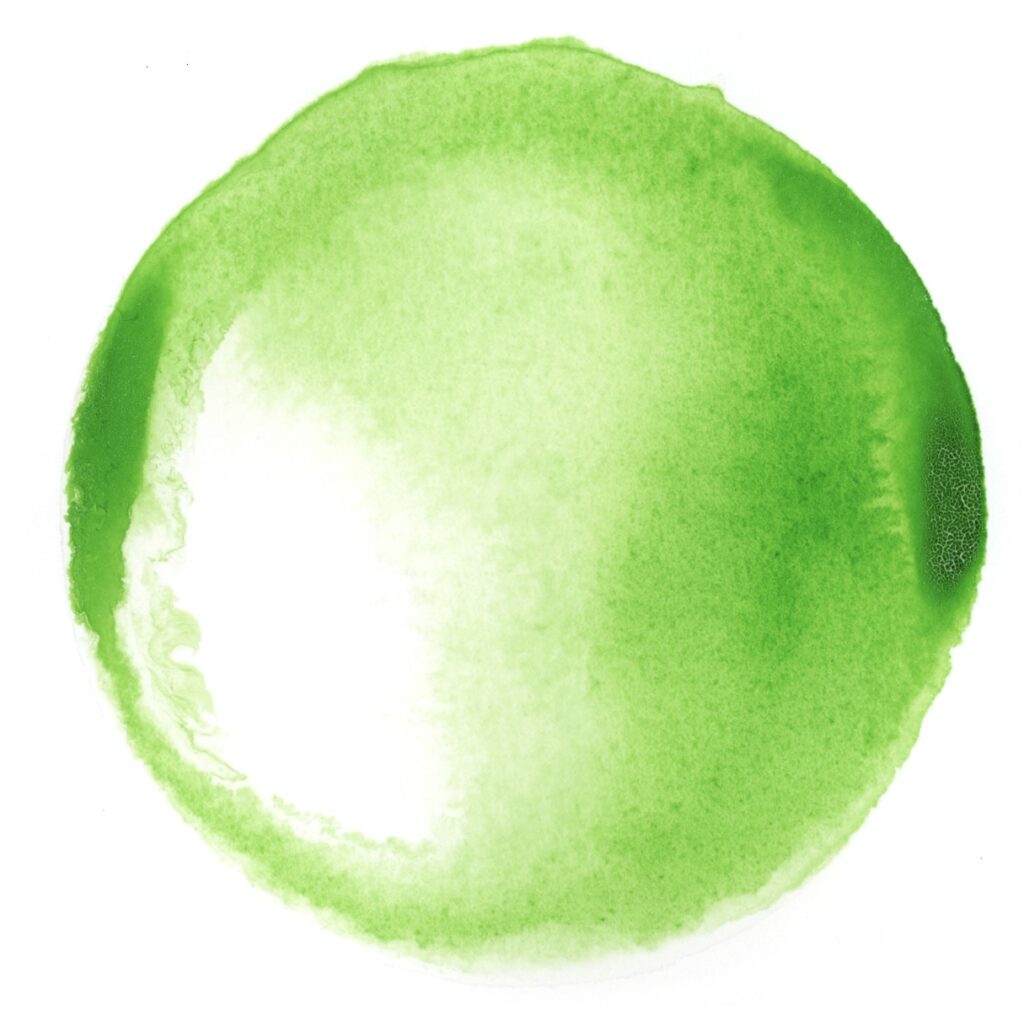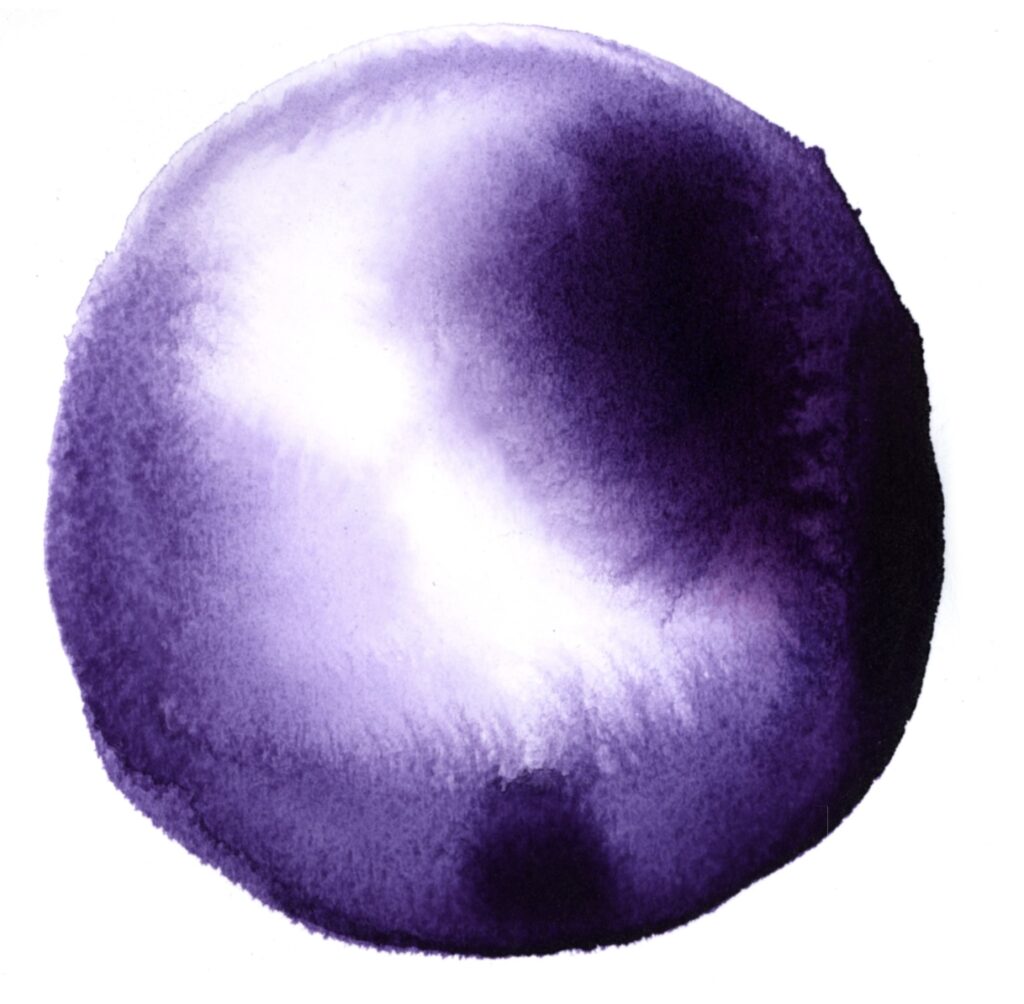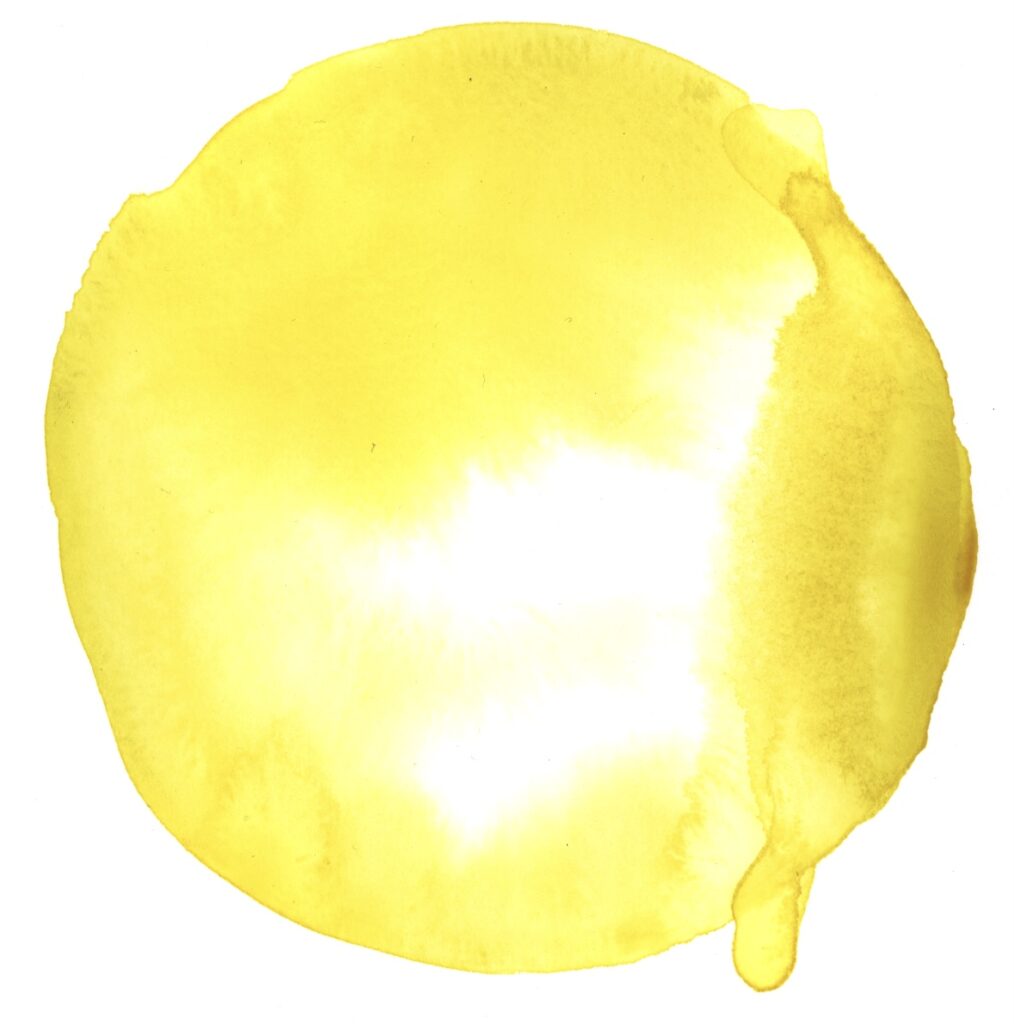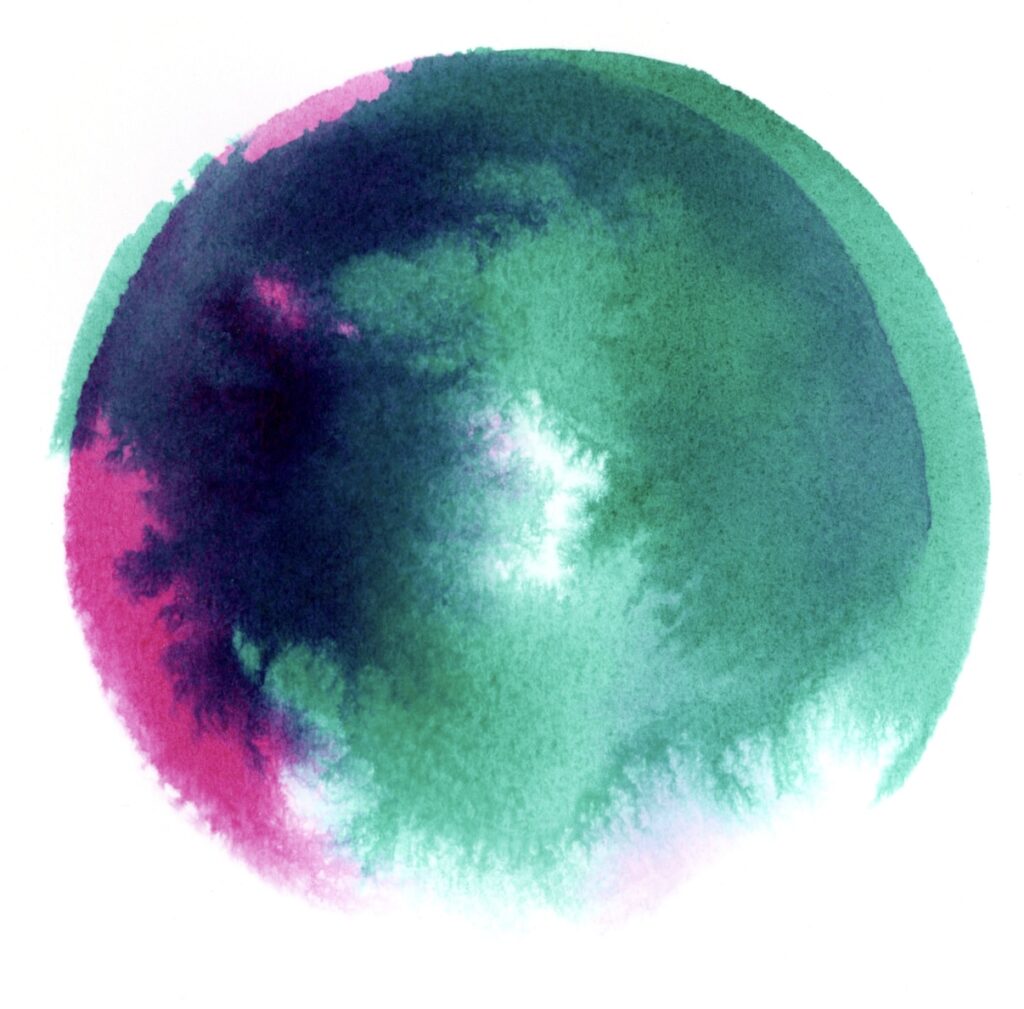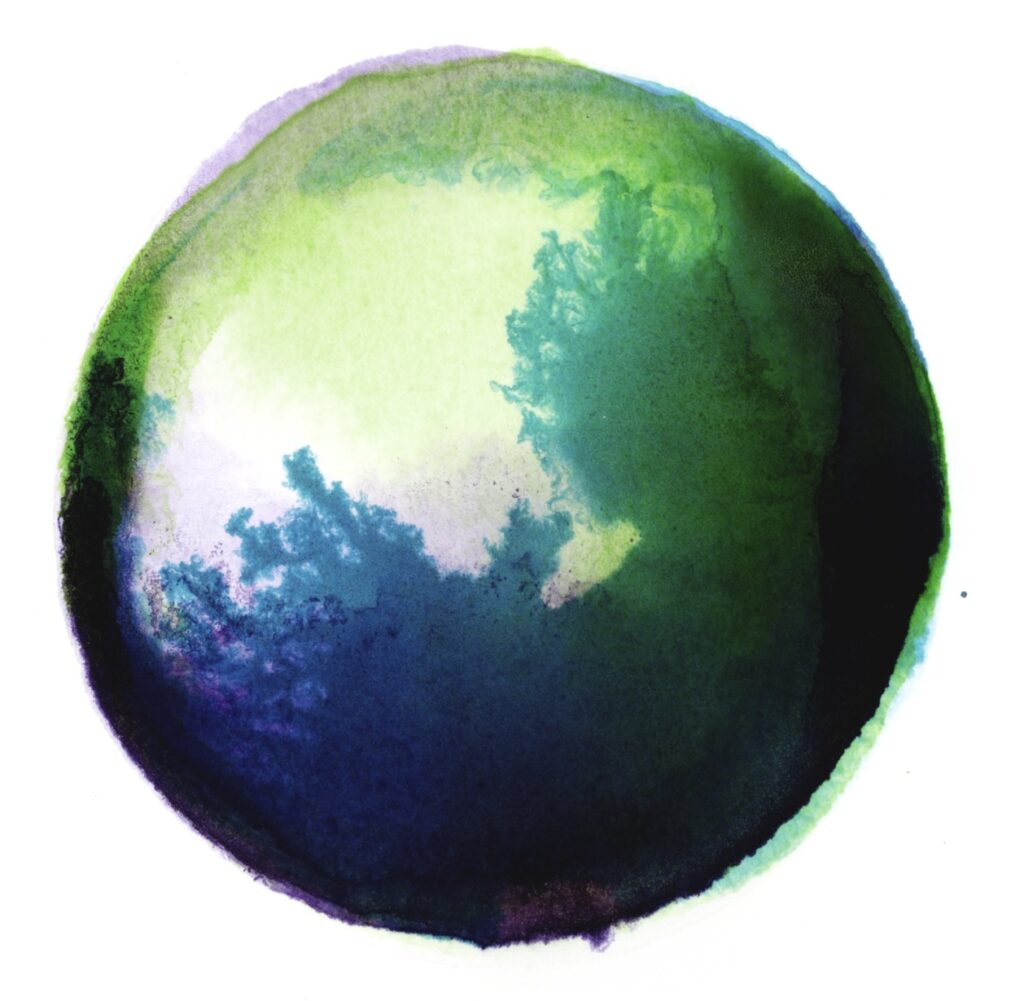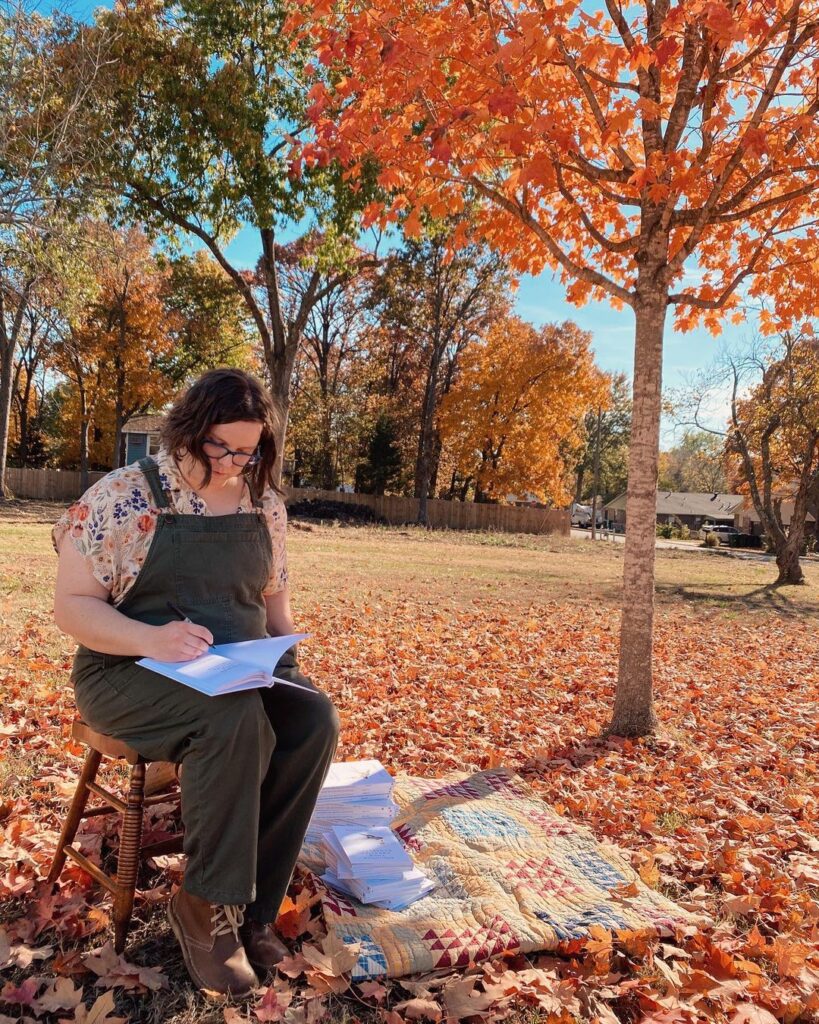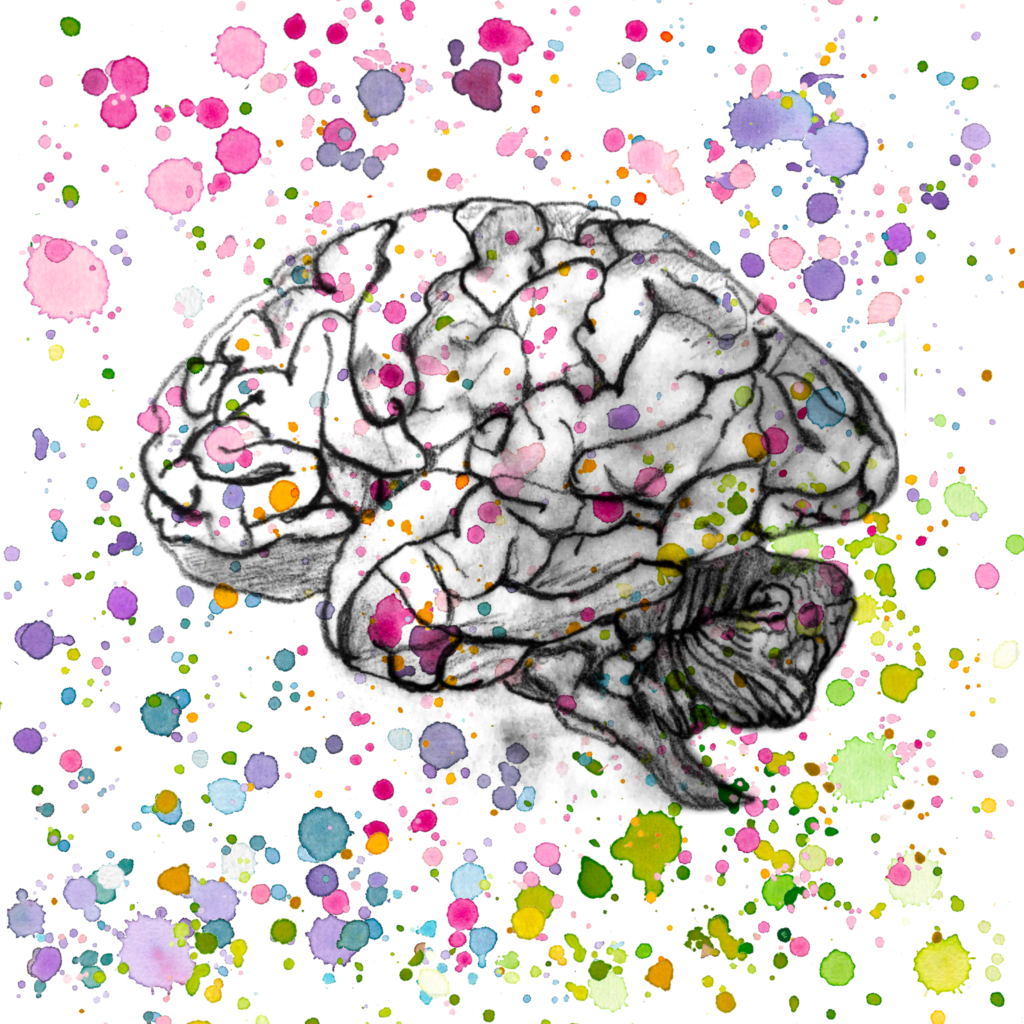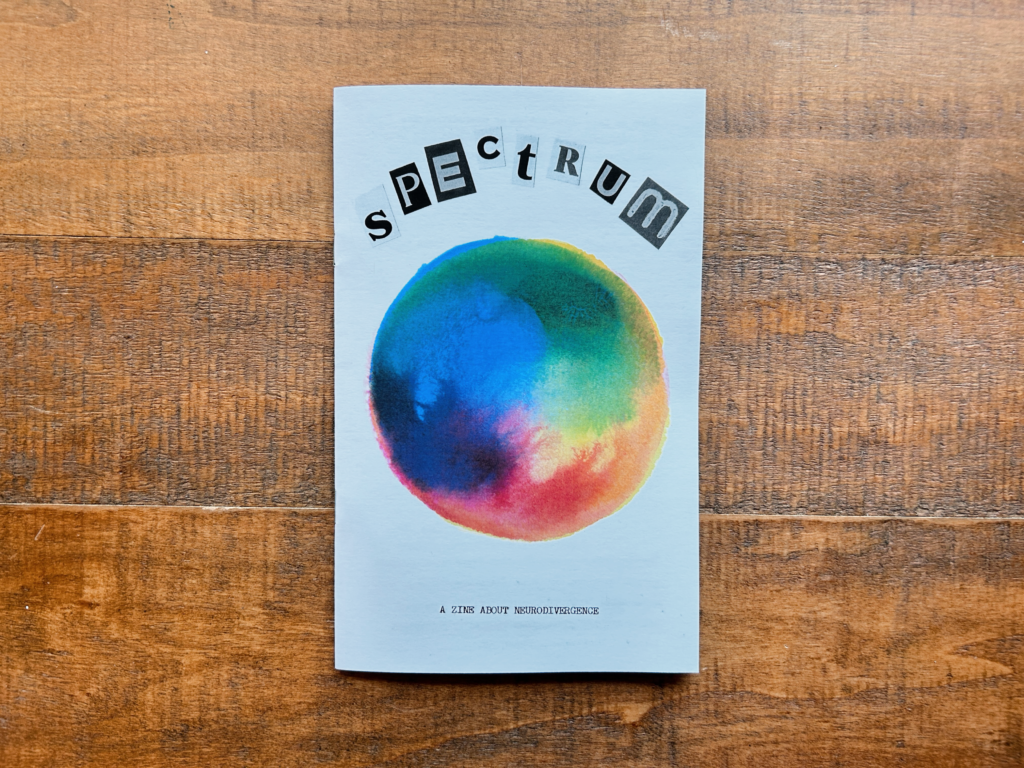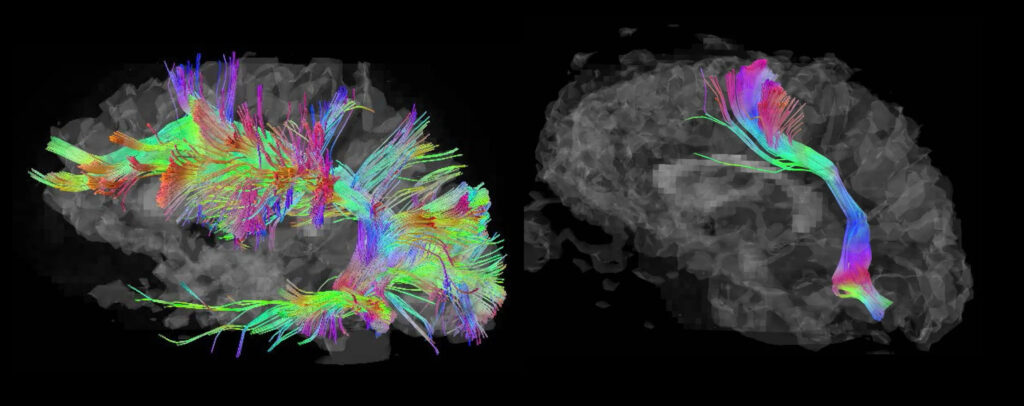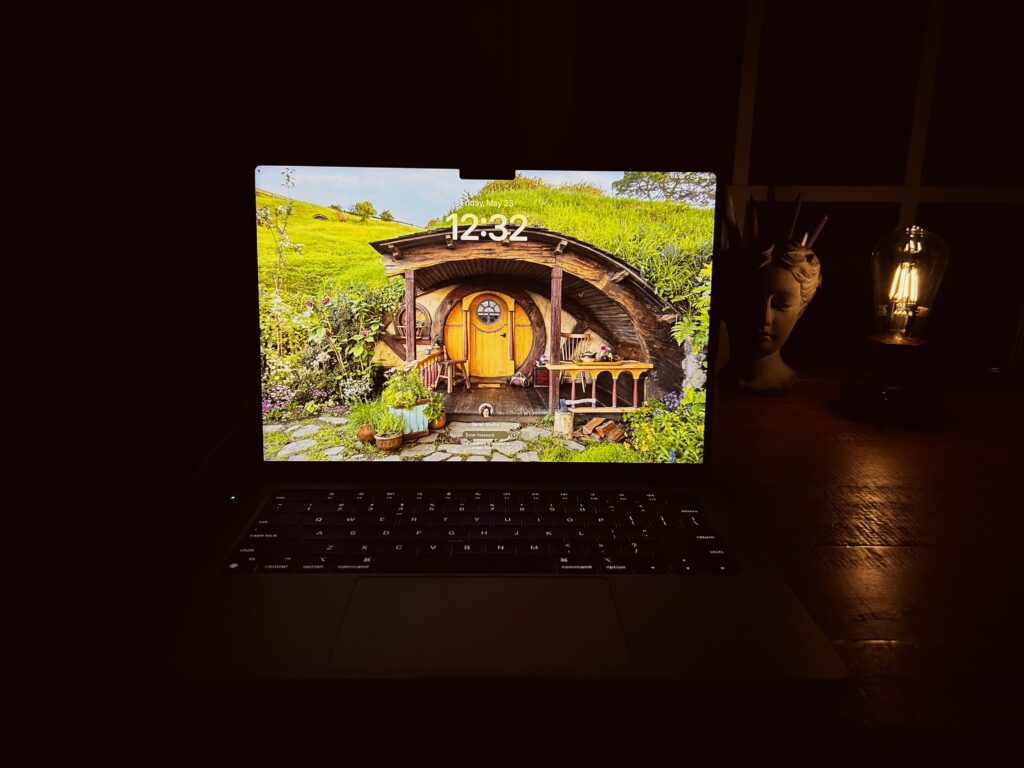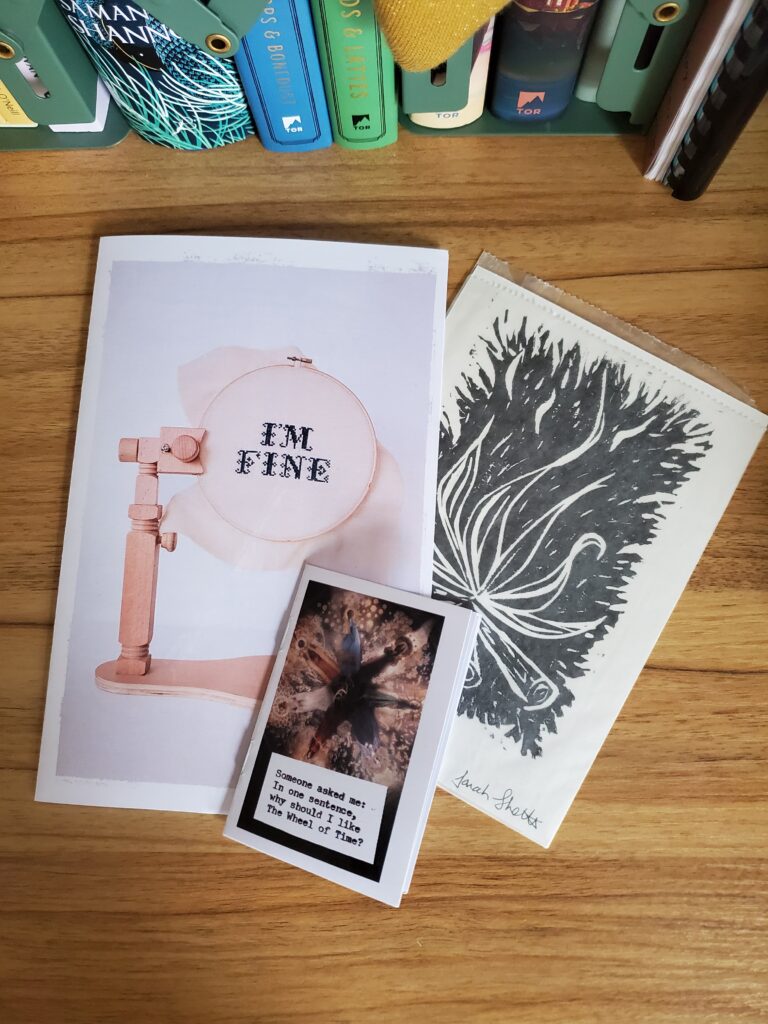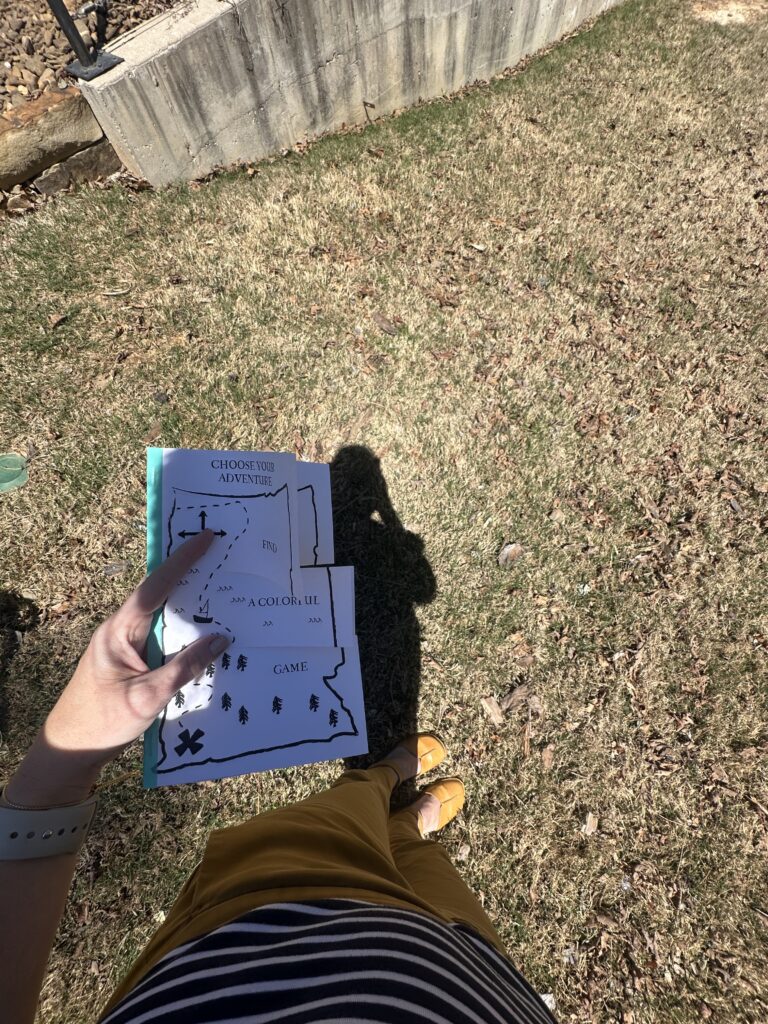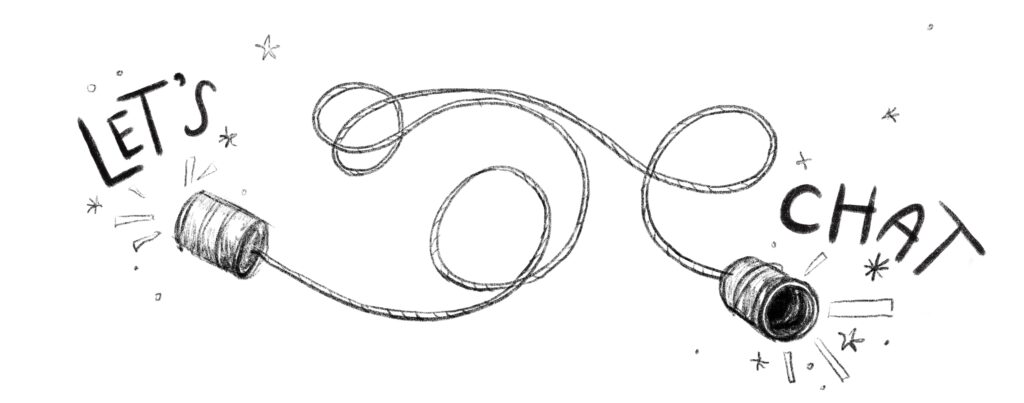My neurodivergent experience includes time blindness, which is magnified when working on a creative project and reaching flow state. This has some benefits, but one downside is that I have no idea how much time I’m sinking into individual projects.
After one of the most creative years of my life in 2023 somehow 2024 was “Oops, All Admin.” My physical and mental health plummeted and you’ve watched me pivot and sunset projects as I’ve tried to rebalance my creative ecosystem.
2025 has been an experiment in making time visible. I did this by logging time in a spreadsheet with monthly pie charts.
I wrote a about this in March, but I thought it was worth checking in again after a whole year.
Spoiler alert, my pie chart has become a north star for my creative process.
My January spreadsheet started out by tracking writing and self publishing time like I do during NaNoWriMo. (Which is why zines don’t show up below.) When I reached days that I didn’t write because I was making visual art I added more columns.
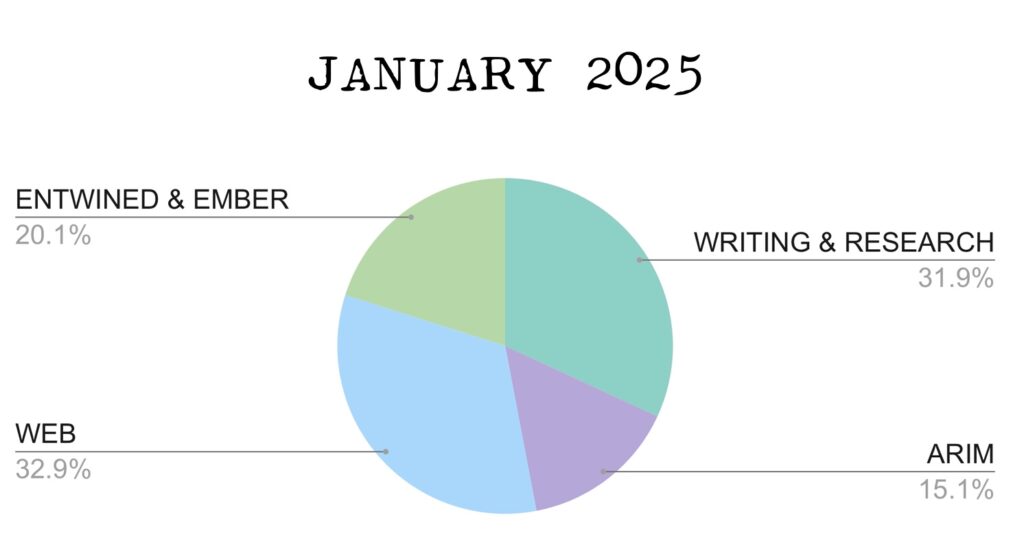
I can guarantee this pie would be almost all admin if I had not seen how big those wedges were and made the choice to dedicate more time to personal projects. Like my Artist’s Residency in Motherhood (ARIM) and my fantasy novel which I made a mood board for.
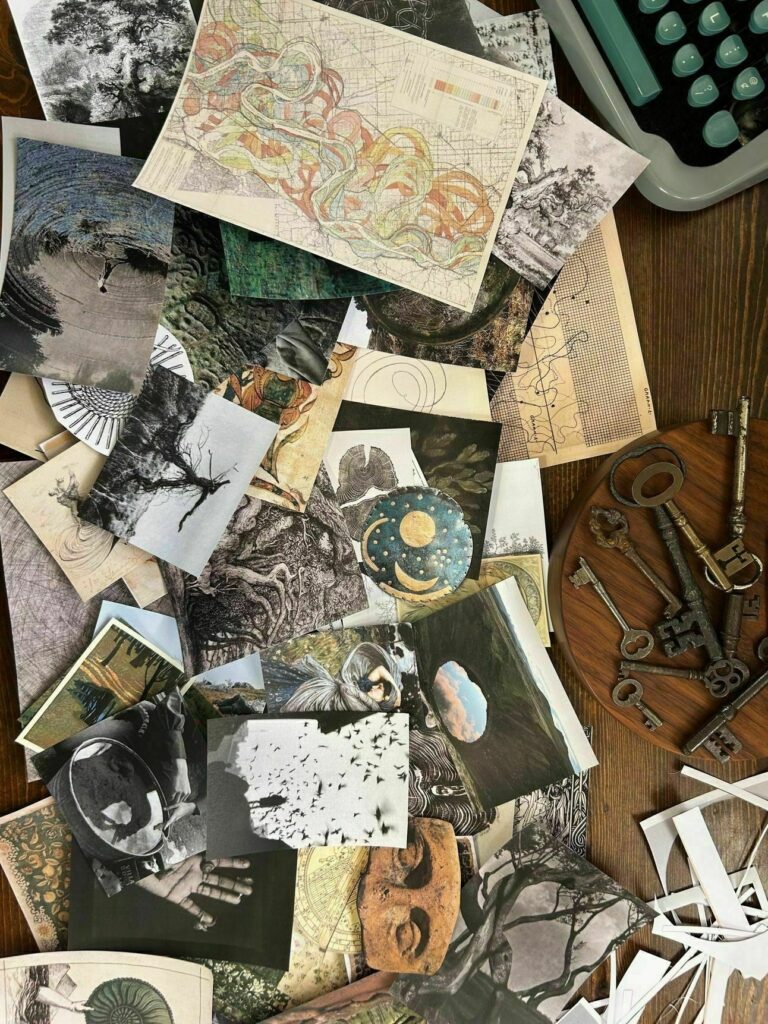

When I saw how powerful this was I realized I wanted to track all of my creative projects this way. So you’ll see more categories moving forward including Mawd which is a working title for my novel.
At the same I time I decided to migrate and completely redesign my website. Needless to say these were not the most balanced months, but I feel strongly about using this data to course correct and not to judge myself.
With that in mind, I fully believe this awareness did keep the web design wedge from completely taking over the circle. And I managed to carve out nearly a quarter of my time to zine making.
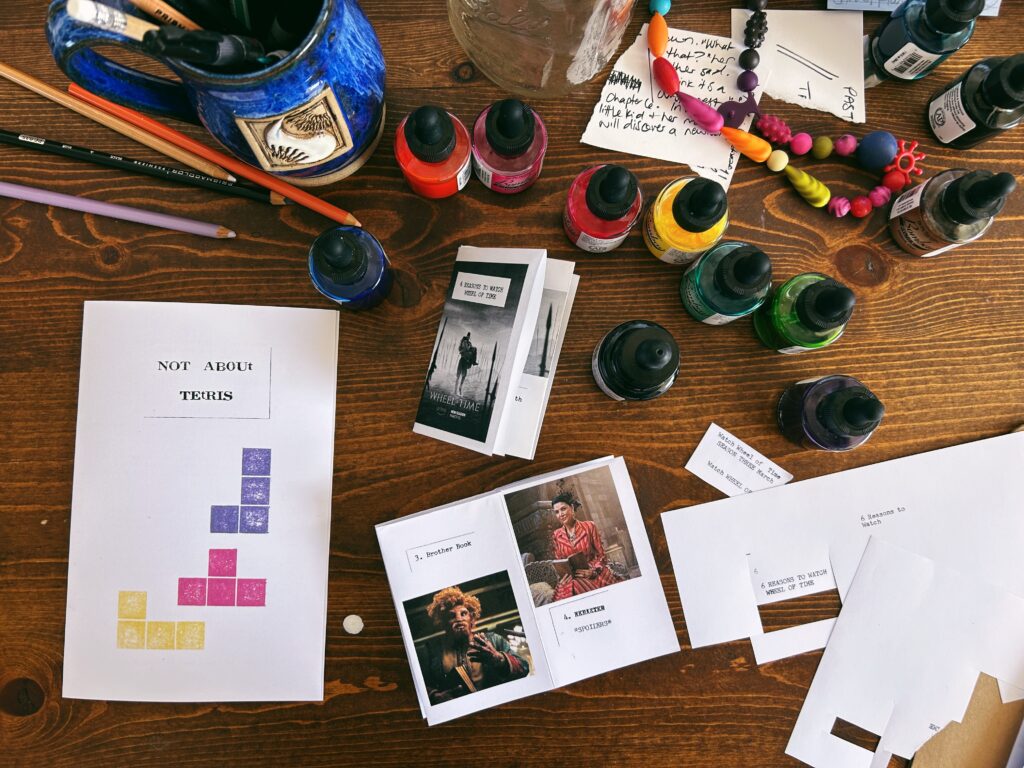
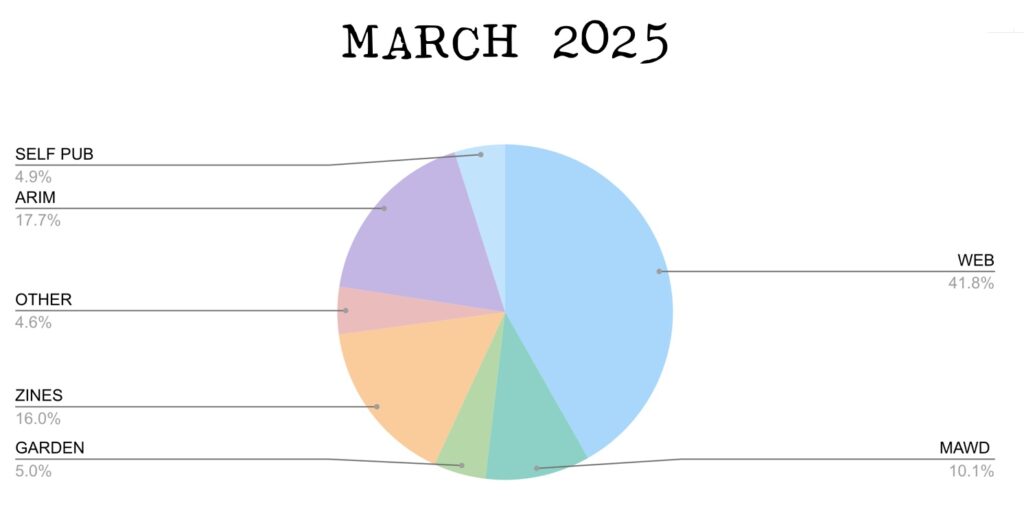
I was still deep in the weeds of web design during March, but I knew I couldn’t continue the pace. I was noticing screen induced migraines and trying to spent more time on other projects. I also added a column for gardening.


By April I realized my dream of republishing all of my blog posts within a single year was not healthy. I’ve archived everything, but I use so many images and videos that simply importing them didn’t work and everything has to be reformatted by hand. I’m not sure when or if I’ll ever move everything. So I decided to focus on any blog posts I wanted to link to and have been moving those.
This freed up a lot of time for various projects. The big pink wedge is work on my gleeman’s cloak to prepare for meeting Sharon Gilham, the costume designer for the Wheel of Time.
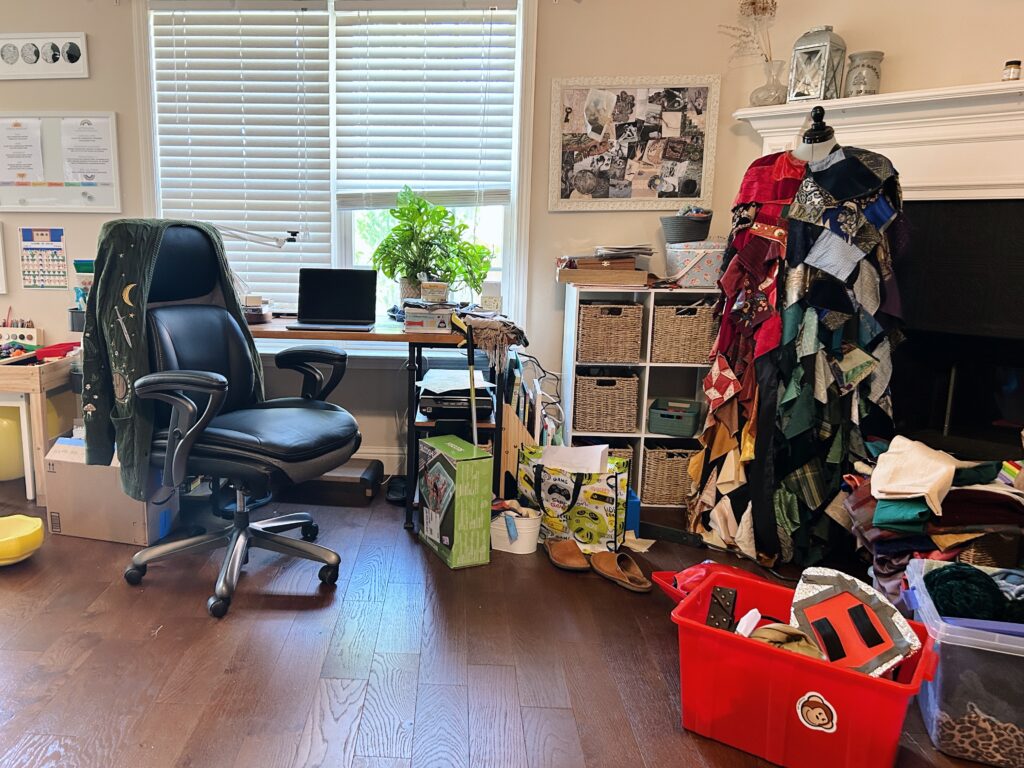
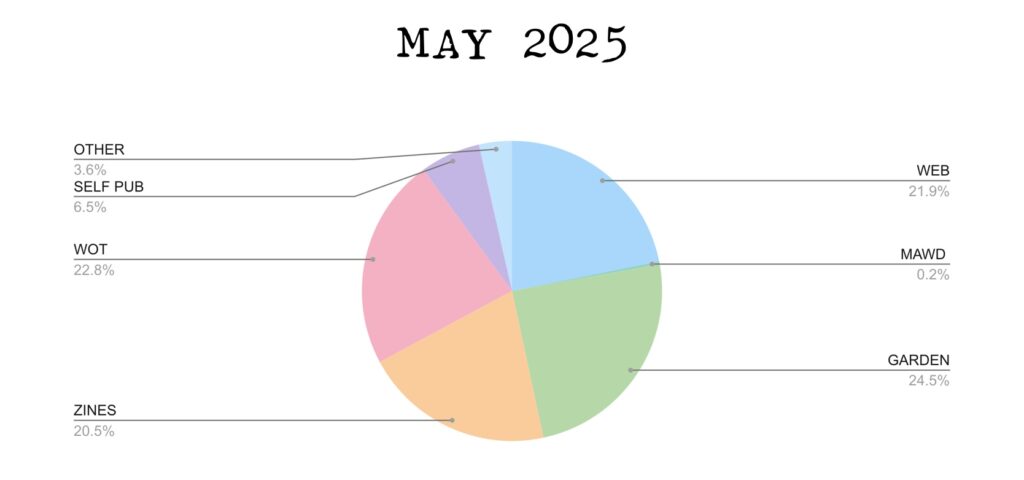
May was incredibly balanced looking back. The weather was nice so we spent plenty of time outside. I made a zine about Chaos Gardening. Chipped away at my website. And kept working on my cloak.
You can see the wedge for self publishing where I was ordering proofs from various printers (the very definition of “hurry up and wait.”)
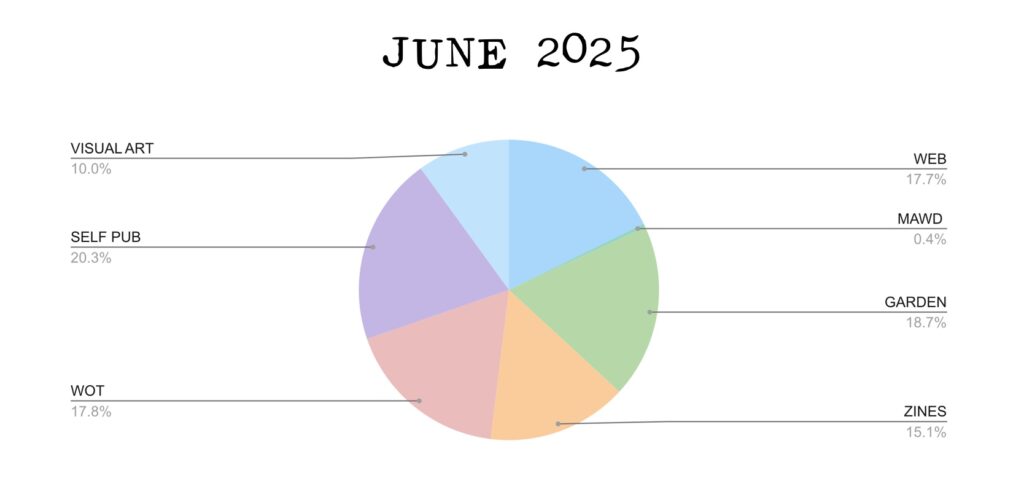
This wedge is even more well balanced than May!
Almost a full color wheel which is funny considering June’s zine was Spectrum.
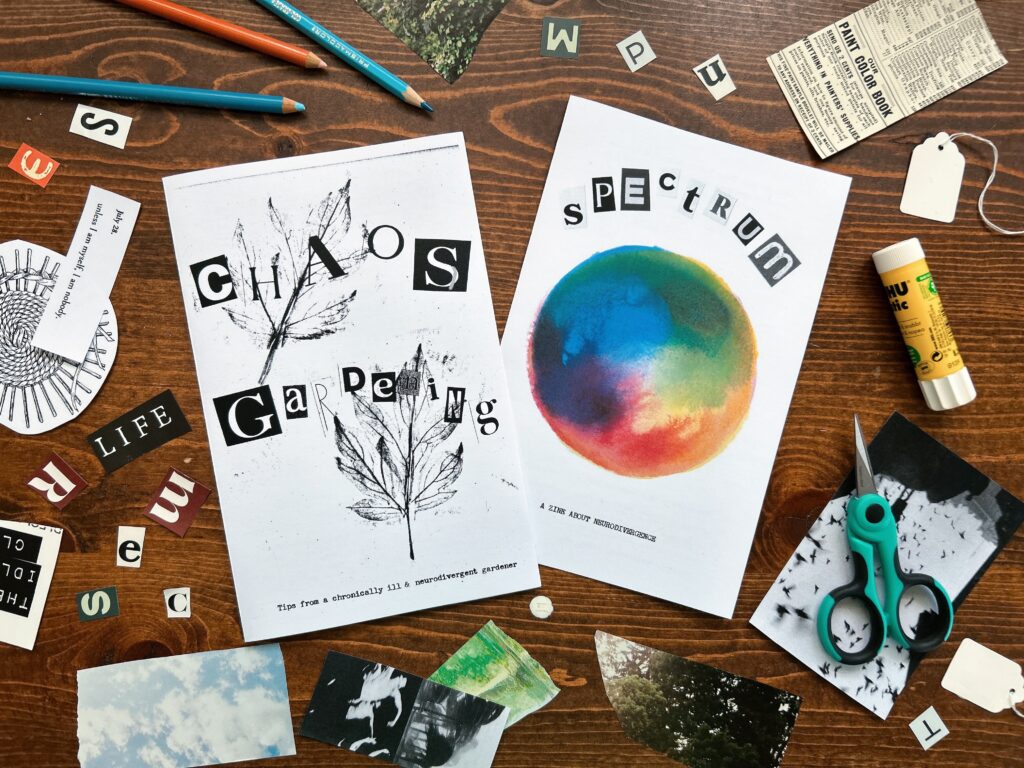
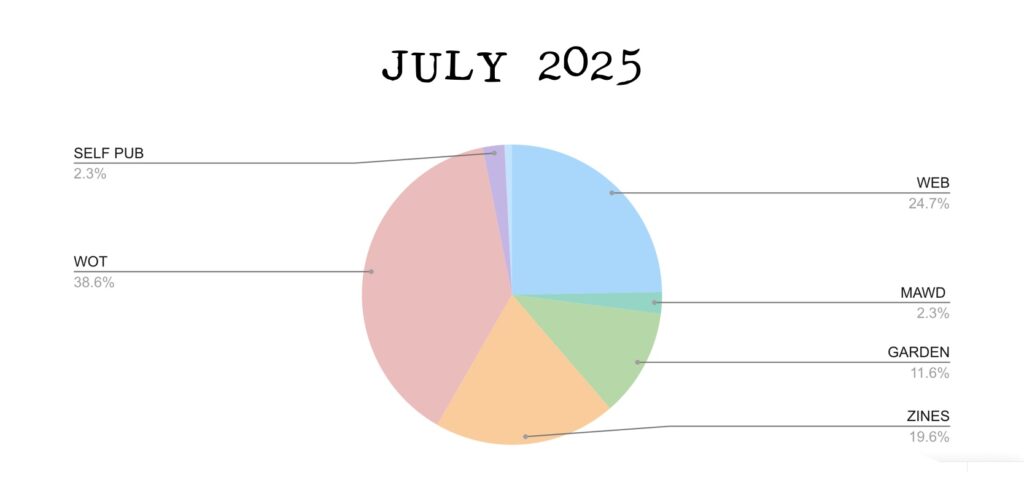
My cloak took over in July as I started recreating specific textiles from the show for new patches.
It wasn’t long ago that I never would have dedicated this much time to something that was purely for me.
Not my portfolio.
Not marketing.
Not for “content.”
Just the joy of making something with my hands that connected me to a story I love and a community that is family to me.
Tap to see my fluttering cloak in action.
I’m now in a place where I see these kind of projects as essential to both my creative process and my mental health.
This reset over the summer (when my energy is the lowest) was key to being able to self publish Entwined & Ember without burning out.

Moving into August I was designing a lot of visual schedules and modular calendar elements for home education. I also started sinking some serious time into Entwined & Ember working alongside our copy editor. But I still reserved over 25% of the pie for other projects including zine making and gardening.


I spent a huge amount of time making zines I did not sell at NWA Maker’s Faire (which I blogged about here.) It was mostly a great experience, but also exhausting. I pretty much crashed directly after even though it was only half a day.
I keep wanting to attend more events, but when I do I’m reminded how hard they are on my autistic nervous system and chronically ill body. I don’t think I could manage a full day event – much less a whole weekend.
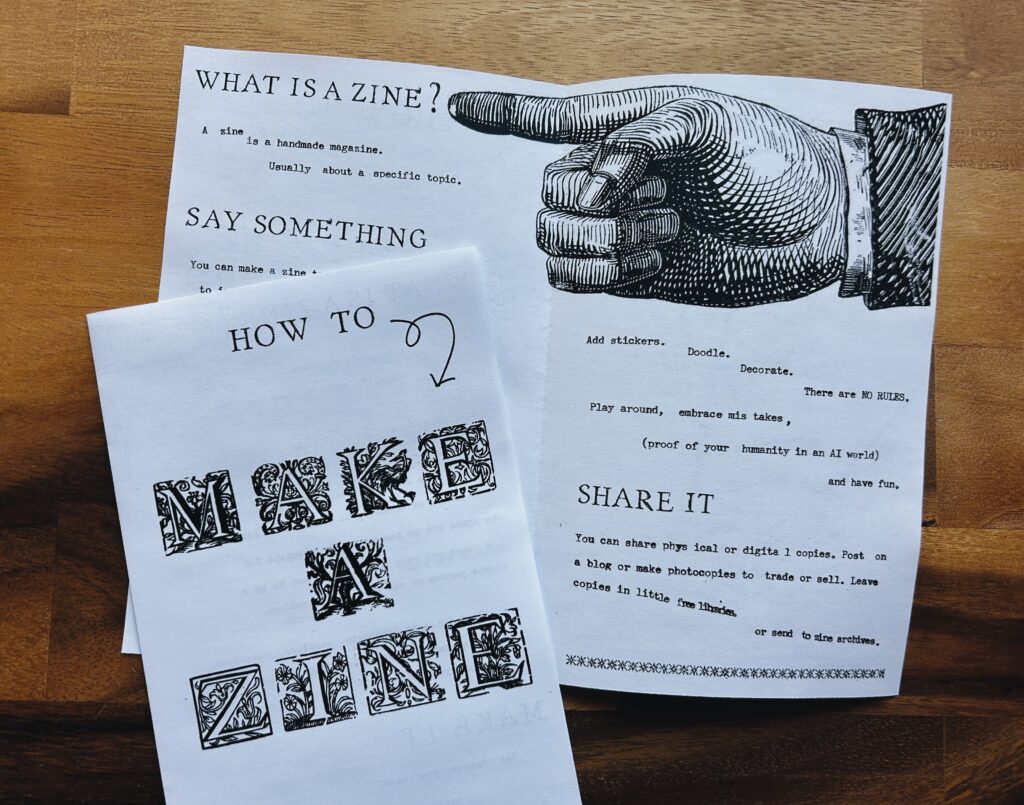
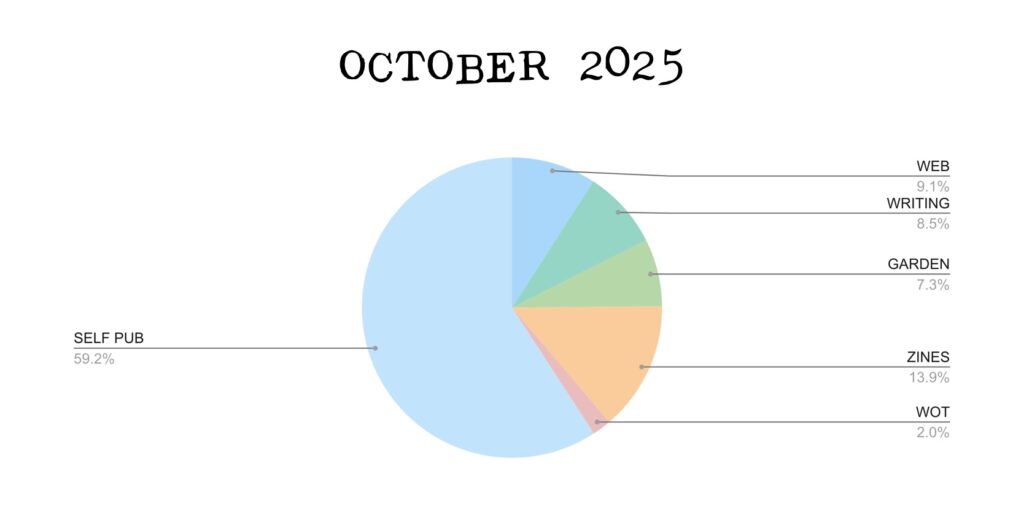
Suddenly Entwined & Ember were in final edits. Past years this would have been all encompassing, but you can still see 40% of my time put into other things: zines, gardening, blogging, even a bit of ideation for my novel (which was definitely a back burner project this year.)


Launch month! Some of this was final proofing and the rest was fulfilling orders. I balanced the admin with zine making and two Wheel of Time related projects.
When I started this anthology and art journal I had no idea how much energy they would take. I truly wish I’d tracked my hours since the beginning.
If you somehow missed book launch Entwined & Ember are now available worldwide in hardcover and paperback. As well as free community copies to anyone experiencing financial hardship.
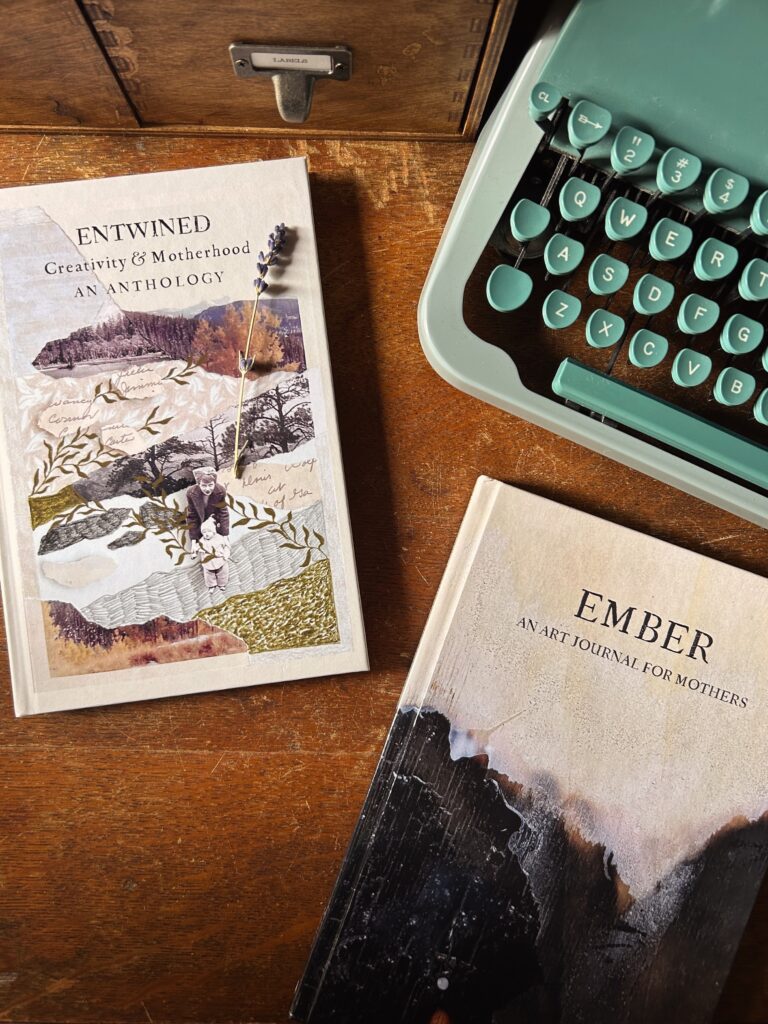
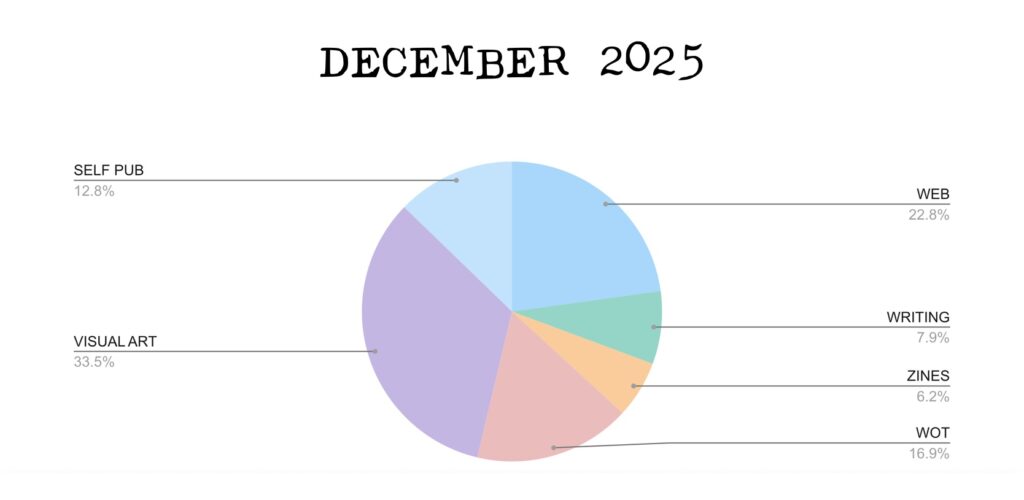
I’m typing this on December 29, but I’ve estimated the time I’ll put in the next couple of days. (I’m getting much better at realizing how long things take.) The biggest wedge this month is actually visual art! Which is something I haven’t had much capacity for this year.
I’m actually working on diagram of my creative process based on this data for ILSSA’s open call. It’s inspired by a meander map showing the ebb and flow of various projects through the year. I’m still in the experimental phases, but if all goes well this will be the next art print for subscribers.
What’s next?
We recently decided on a printer for the limited edition hardcovers of How it Feels to Me – a picture book about neurodivergence and sensory processing I’m creating with illustrator Gracie Klumpp.
We’re a little behind schedule (due to the print quality issues), but are aiming to release the book next Spring!
Here’s a peek.

I’m not a spreadsheet wizard, but if you’d like to take a look at my Artist Log template and copy it for yourself you can see it here. If you’re fiddling around with it I recommend typing in numbers to make sure everything is adding up correctly. I changed mine every month so this isn’t really a template as much as a working model you can make your own.
If your creative process was a pie chart (or another shape) what would it be?
Cheers,
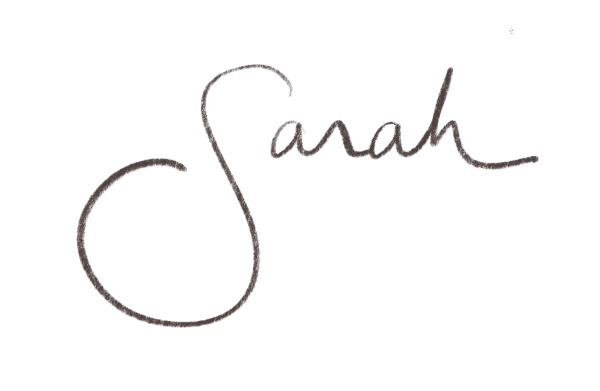
P.S. I “should” proofread this, but it’s nearly 1 am and I’m nearing migraine trigger territory. I may come back or I may not. Honestly, there are more important ways to spend my time this week. 💫
